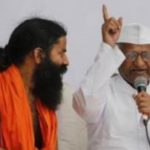 Much has been written and discussed about the recent ‘civil society’ protests against corruption in India. Social activist Anna Hazare’s four day fast in April compelled the United Progressive Alliance (UPA) to re-consider the Lokpal Bill through a joint committee involving ministers and members of civil society. Yoga guru, christened as ‘Baba’ Ramdev, launched his hunger strike in protest against the black money stashed in foreign banks earlier this month. There has been some debate among the supporters of Anna Hazare and Ramdev regarding entrepreneurial recognition for the “fast-track” approach to combat corruption. The Government claims to have been responsive to the demands of civil society in both instances, though Ramdev’s uncompromising attitude necessitated use of force to disband his yoga-cum-protest camp.
Much has been written and discussed about the recent ‘civil society’ protests against corruption in India. Social activist Anna Hazare’s four day fast in April compelled the United Progressive Alliance (UPA) to re-consider the Lokpal Bill through a joint committee involving ministers and members of civil society. Yoga guru, christened as ‘Baba’ Ramdev, launched his hunger strike in protest against the black money stashed in foreign banks earlier this month. There has been some debate among the supporters of Anna Hazare and Ramdev regarding entrepreneurial recognition for the “fast-track” approach to combat corruption. The Government claims to have been responsive to the demands of civil society in both instances, though Ramdev’s uncompromising attitude necessitated use of force to disband his yoga-cum-protest camp.
Responses to this wave of civil society protests can be broadly classified into two categories. Supporters of the protests justify civil society’s unease on the basis of Government’s growing incompetence, excessive corruption and power induced arrogance. Critics, see the over-zealous members of civil society as a threat to the democratic law making process and institutional separation of powers. Both sides make valid arguments. Is it possible to accurately identify the villain and hero in this confrontation?
Perhaps not. Each side is blaming its imperfections on the other and waging a holier-than-thou campaign. Beyond the specifics of each campaign three broader challenges which require urgent attention have been overlooked: i) breakdown of credible communication between government and civil society, ii) the approach where public accountability is less continuous and more of a credibility seeking slogan during election campaigns and iii) the expectation that Government is more responsible and better equipped for effecting social change.
The UPA has a great disaster control communication strategy, mastered by none other than Minister of Human resource Development, Kapil Sibal. The problem is not limited to the UPA alone, ministers and bureaucrats in India are largely closed to communication with the electorate. In any interactive relationship the problem begins when communications stop; in the Indian democracy communications begin when the problem begins. The government does not initiate communication but only provides answers when questioned. And these answers are upheld as proof of the government’s responsiveness! Public diplomacy should not simply be about the MEA (Ministry of External Affairs) setting up twitter handles and Facebook accounts, it’s about using various mediums of communication to reach out to the masses, to communicate. The cacophony of demands and voices of opposition (including the unintelligent ones) cannot be an alibi for restricted communication. According to M.R. Madhavan the, “process of enacting a law provides several opportunities for citizens to engage with the system.” But is the availability of these opportunities communicated and made simpler for people to access? It’s assumed that if people are interested in the law making process they can switch on Lok Sabha channel and keep track of the debates. The onus is again on the people. The government is not interested in devising a communications strategy where information on issues of public interest is disseminated across all mediums ranging from twitter to a revamped (and livelier) Doordarshan. People might not show instant interest and may remain indifferent to this information flow, but at least the government will be doing its job – talking to the people.
Accountability in India is restricted to what the government has done and what the party, staking claim to government, promises to do. What the government is doing does not fall under the preview of accountability. If you want to know what the government is doing you can find ‘all’ the details on the websites of the respective ministries. For what the government has done or what the party proposes to do, the medium of communications are more mundane – glossy posters, catchy slogans, public rallies and fiery speeches.
Finally, the civil society not only hopes but staunchly believes that government can and should address all social problems. The government is no doubt responsible for the over-all wellbeing of the society and nation but it’s naïve to expect that new laws will stimulate the desired changes. Take for instance, the Right to education Bill. Geeta Anand narrates the social barriers and on-the-ground problems at Delhi’s most coveted Sri Ram School that restrict implementation of the law in spirit. Likewise, corruption is a larger social issue despite the fact that politicians are the most visible culprits. Among the supporters of Ramdev are several owners of small businesses who evade taxes each year and would continued to zealously guard their black money. The ongoing protest campaigns portray the government as the repository of all ills and the civil society as a victim or at most a helpless accomplish. This point is not made to defend government, but to highlight that the roots of all problems don’t necessarily lie in politics. Social attitudes, individual traits and cultural prejudices also contribute to the social challenges.